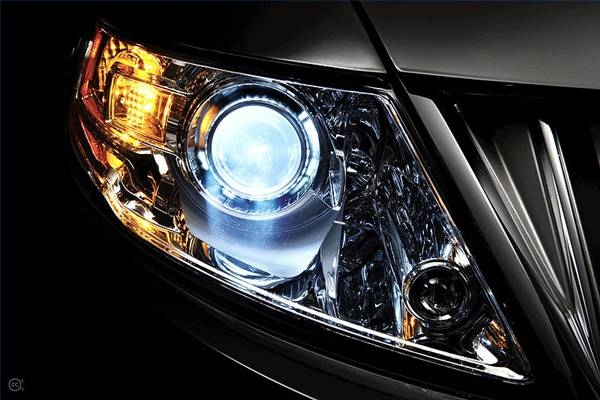
HID (High-Intensity Discharge) lights have become popular in recent years, as a substitute for traditional halogen automobile headlights. The technology differs from halogen bulbs by its use of xenon gas to produce a beam of light, rather than a traditional filament used in a halogen headlight. The result is a brighter, longer-lasting light source. HID lights are used in other applications such as stadium lighting as well; however, they are primarily used in automobiles.
Most HID lights have a lifespan of approximately 2,000 hours, four times as long as most halogen lights. HID lights are more efficient when allowed to warm up; turning a HID light on and off quickly will reduce its lifespan.
HID lights are not available as a factory option on every vehicle; however, aftermarket providers sell HID kits for many different vehicles. The kits offered replace the entire halogen headlamp assembly on a vehicle and usually cost between $400 and $600.
Some drivers find oncoming vehicles equipped with HID lights very distracting; others do not. The complaints received about HID lights state the blue tint partially blind a driver's line of sight, when passing a HID-equipped vehicle.
HID lights produce about twice as many lumens (measure of light) as traditional halogen bulbs, allowing drivers to have increased visibility. This applies to direct visibility and corner visibility, because the brighter lights increase the width of the light beam.
HID lights contained mercury until 2004. The use of mercury was frowned upon because it posed a risk of contamination once HID lights were disposed of. Newer HID lights are more environmentally friendly than older sets, and are better for the environment than halogen bulbs because they last longer. Longer lasting bulbs mean fewer become disposed of, which minimizes waste.
HID lighting is much more expensive than halogen lighting, even when considering the longer life of HID lights. Because HID lights do not use filaments or actual bulbs, replacing an HID system requires replacing the entire gas discharge system.
HID lights do not immediately provide a strong source of light. The system needs to warm up for 15 to 20 seconds before it reaches its peak power level. Halogen lights supply a steady source of light instantaneously.